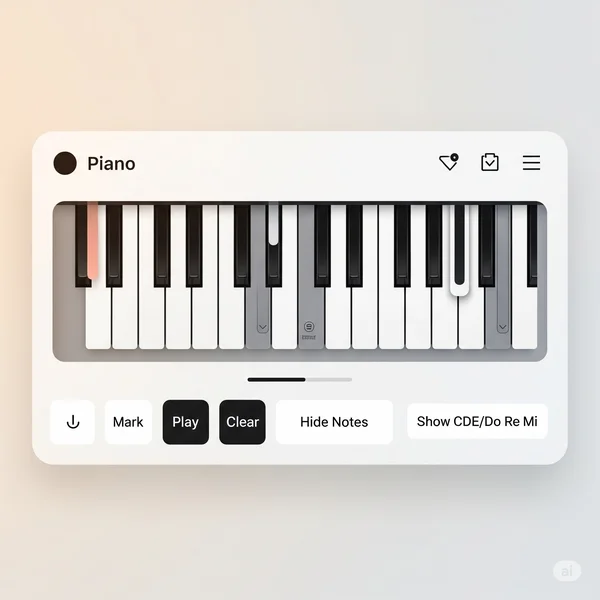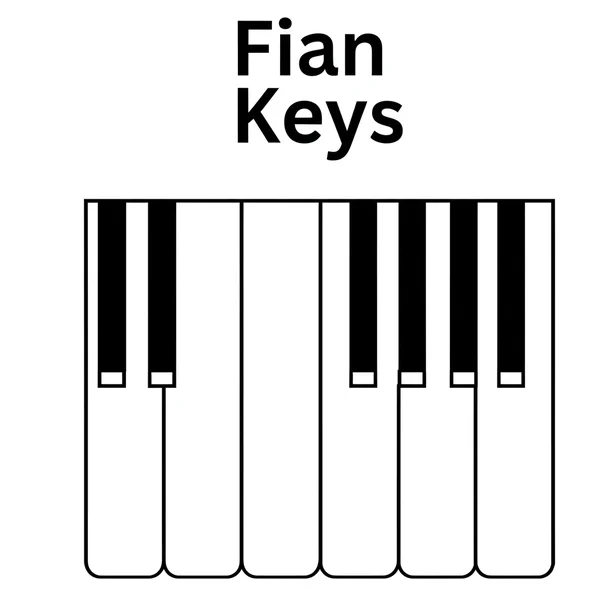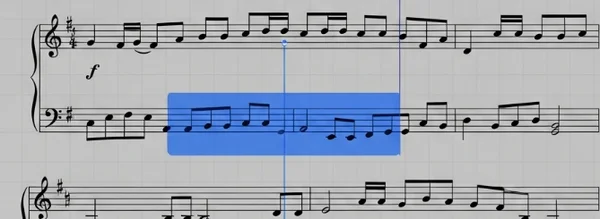Virtual Piano Composition: A Beginner's Guide to Songwriting with Online Piano Keyboard
Do you dream of writing your own songs but feel intimidated by traditional instruments and music theory? What if you could unlock your songwriting potential with just your computer and an internet connection? This beginner's guide will show you how to use a virtual piano and online piano keyboard to start composing your own tunes, even if you have no prior experience! Ready to embark on your musical journey? Click here to access our free online piano and start composing!
Why Use Online Piano for Songwriting?
Accessibility and Convenience: Write Music Anywhere: The magic of online piano songwriting lies in its unparalleled accessibility. With our virtual piano, your inspiration can take flight anywhere, anytime. Forget about lugging around heavy equipment or being confined to a music studio! All you need is a device with a web browser and an internet connection. Can songwriting really be this easy? Yes! Let the new way make music easy for you!
Cost-Effective: No Need for Expensive Instruments: Traditional pianos and keyboards can represent a significant financial burden, especially for beginners. With our free online piano keyboard, you can explore the world of music creation without any upfront investment. It's the perfect way to experiment with different sounds, melodies, and harmonies before committing to purchasing expensive equipment.

Understanding the Basics of Music Theory
Scales and Keys: Building Blocks of Melodies: A basic understanding of music theory can greatly enhance your songwriting abilities. A scale is a sequence of notes arranged in a specific order, forming the foundation for your melody. A key establishes the tonal center of your song, providing a sense of unity and coherence. Where do I start with music theory? Start with the basic scales of C and G and learn how to identify notes with the keyboard.

Chords and Progressions: Creating Harmony: Chords are groups of notes played simultaneously, creating harmony and adding depth to your songs. A chord progression is a series of chords played in a specific order, forming the harmonic structure of your composition.
Rhythm and Timing: Adding Groove to Your Tunes: Rhythm and timing are essential elements of music, giving your songs a sense of movement and groove. Experiment with different rhythmic patterns and time signatures to find what best suits your musical idea.
Choosing a Scale for Your Song
Major vs. Minor Scales: Which One to Choose?: Major scales generally evoke feelings of happiness, optimism, and joy, while minor scales tend to convey sadness, melancholy, or mystery. The choice between a major and minor scale depends on the mood and emotion you want to create in your song. Start exploring scales and the world of easy melodies now.

Experimenting with Different Scales and Modes: Once you're familiar with major and minor scales, you can venture into other scales and modes to add unique colors and textures to your compositions. Pentatonic scales, blues scales, and various church modes offer a wide range of sonic possibilities.
Creating a Chord Progression
Basic Chord Progressions for Beginners: Some commonly used chord progressions that are easy for beginners to learn include I-IV-V-I (e.g., C-F-G-C in the key of C major) and I-vi-IV-V (e.g., C-Am-F-G in the key of C major). These progressions provide a solid foundation for countless songs across various genres.
Adding Variety and Emotion to Your Chords: To make your chord progressions more interesting and emotionally expressive, experiment with chord inversions (rearranging the notes within a chord) and passing chords (chords that briefly connect two more stable chords). You can also use seventh chords (chords with four notes) to add richer harmonies.
Developing a Melody
Using Online Piano to Experiment with Melodies: The online piano keyboard at [https://onlinepiano.io](https://onlinepiano.io) is the perfect tool for experimenting with melodies. Simply play around with different notes within your chosen scale or key until you discover a phrase that resonates with you. Use the "Mark" and "Play" feature to loop and refine your ideas.
Adding Rhythm and Groove
Simple Rhythms for Beginners: Begin by using simple rhythms such as quarter notes, half notes, and whole notes. As you become more comfortable, you can explore more complex rhythms like eighth notes, sixteenth notes, and syncopation.
Experimenting with Different Rhythmic Patterns: Try creating different rhythmic patterns by varying the duration and emphasis of your notes. You can also incorporate rests (silences) to add interest and variety to your rhythmic ideas.
Using the Online Piano Features for Songwriting
Utilizing the Mark and Play Features for Iteration: The "Mark" and "Play" features on [https://onlinepiano.io](https://onlinepiano.io) are invaluable tools for songwriters. Use them to mark and loop sections of your melody or chord progression, allowing you to experiment with variations and refine your ideas with ease.

Using Show CDE/Do Re Mi to Understand Notes: The "Show CDE/Do Re Mi" feature displays note names (CDE) or solfège syllables (Do Re Mi) directly on the virtual keys, making it easier to understand the notes you're playing and how they relate to each other. This is particularly helpful if you're new to music theory or reading music.
Tips for Overcoming Writer's Block
Finding Inspiration in Daily Life: Inspiration can be found everywhere! Pay attention to your surroundings, your emotions, and your experiences. A captivating sunset, a thought-provoking conversation, or a personal challenge can all spark a new musical idea.
Collaborating with Other Musicians Online: Connecting with other musicians online can be a powerful way to overcome writer's block and broaden your creative horizons. Share your work, gather feedback, and collaborate on new projects to fuel your inspiration.
Unleash Your Inner Composer with Virtual Piano Composition
So, are you ready to embark on your songwriting adventure? As you've discovered in this beginner's guide, composing tunes doesn't require years of training or expensive equipment. With just your computer, an internet connection, and our free online piano keyboard at [[https://onlinepiano.io](https://onlinepiano.io)]([https://onlinepiano.io](https://onlinepiano.io)) you can start expressing your musical ideas and crafting your own original songs today! Don't let a lack of experience or resources hold you back. Embrace the simplicity and accessibility of virtual piano composition, experiment with different sounds and melodies, and most importantly, have fun! Share your creations with the world, and inspire others to discover their own musical potential. What amazing tunes will you create?
Your Burning Questions About Online Piano Songwriting Answered
We understand you might still have some questions about using an online piano for songwriting. Here are answers to some frequently asked questions to help you on your musical journey:
What is the best scale to start with?: The C major scale (all white keys) is an excellent starting point for beginners due to its simplicity and familiarity. It's a diatonic scale, meaning it contains only whole and half steps, making it easy to play and visualize on the keyboard. Plus, many popular songs are written in C major!
How do I create a catchy melody?: Focus on creating a memorable and singable phrase that repeats and varies throughout your song. Use stepwise motion (notes that are close together) to create smooth and flowing melodies. Also, pay attention to the rhythm and phrasing of your melody to make it more engaging.
Where can I find inspiration for my songs?: Inspiration is all around you! Listen to your favorite music across different genres, explore nature, observe human interactions, read inspiring books and poems, and most importantly, tap into your own emotions and experiences. Don't be afraid to experiment and try new things!
How do I protect my music copyright?: Protecting your music copyright is essential to safeguarding your creative work. Consult with a music attorney or copyright expert to learn about the steps involved in registering your original compositions with the U.S. Copyright Office. You can also use online services to help you protect your music online.